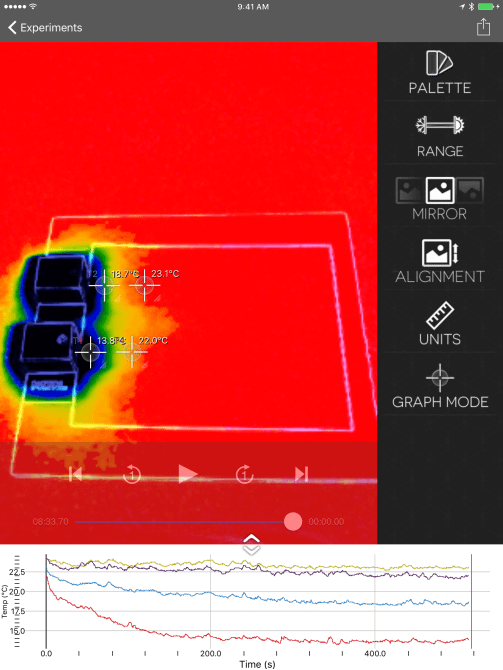Investigate thermal conductivity in solids.

Gather several materials of similar thickness such as wood, cardboard, ceramic, steel, and glass. Set two materials side by side on two layers of corrugated cardboard or on a piece of foam core. Place a (non-insulated) container of very hot water on the end of each of the materials. Use the FLIR ONE™ thermal camera and the Thermal Analysis app to measure the temperature at four locations. Place two spot thermometers close to the warm container close to where the material lies under the paper. Then place two additional spot thermometers about two centimeters away from the warm container, also over the material being studied. Compare the rate of change of temperature. In addition to investigating the effect of heat, you can also investigate the effect of cold. Try using a (non-insulated) container of ice water or a solid metal block that has been in the freezer.
Note that the emissivity, an object’s ability to emit infrared radiation, of the materials will probably differ. For example, a plastic ruler and a metal ruler that are both similarly cold from sitting under ice will not appear to be the same temperature in infrared due to their differences in reflectivity and emissivity. In fact, different metals at the same temperature can also appear dramatically different in infrared due to emissivity differences. A solution to equalize emissivity and reflectivity is to place a piece of paper over the materials. Try different papers to see what works best.
